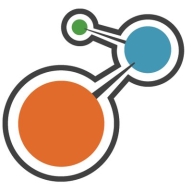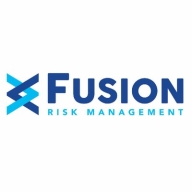

Active Risk Manager and Fusion Framework compete in risk management solutions. Based on data comparisons, Fusion Framework holds a slight edge due to its comprehensive features and perceived value.
Features: Active Risk Manager provides strong capabilities in risk assessment, reporting, and mitigation, making it well-suited for industries with complex risk environments. Fusion Framework offers an integrated platform focusing on business continuity, resilience, and incident management, positioning it as a more versatile option.
Ease of Deployment and Customer Service: Fusion Framework's cloud-based deployment facilitates quick implementation with comprehensive support for smooth integration. Active Risk Manager might require a more tailored approach, potentially extending timelines, but Fusion Framework's robust customer service enhances its appeal.
Pricing and ROI: Active Risk Manager's competitive pricing structure is attractive for businesses seeking cost-effective solutions with solid ROI. Fusion Framework, despite potentially higher initial costs, is perceived as providing greater ROI due to its enhanced features and cross-functional capabilities, promising long-term benefits.
Active Risk Manager offers comprehensive risk management solutions tailored to knowledgeable professionals. It provides a structured platform to identify, assess, manage, and report risks effectively, enhancing decision-making and operational resilience.
Active Risk Manager addresses diverse business challenges with its robust features, supporting businesses in mitigating potential risks and maximizing opportunities. Known for its adaptability, it integrates seamlessly into business processes, helping organizations navigate complex risk landscapes. With its focus on proactive risk management, Active Risk Manager ensures that companies can anticipate and adapt to changing risks, thereby safeguarding their strategic objectives and daily operations.
What are the most important features of Active Risk Manager?Active Risk Manager is applied across industries like finance, healthcare, and manufacturing, where it supports compliance and risk mitigation efforts. In finance, it helps manage strategic and operational risks, while healthcare uses it to address patient safety and data protection concerns. Manufacturing relies on it to ensure safety and supply chain resilience.
Fusion Framework is used for enhancing risk management, facilitating business continuity planning, and automating workflows. It integrates with other systems, tracks critical processes, aids in incident management, and helps maintain compliance standards.
Fusion Framework provides customizable risk management, comprehensive tracking, and real-time monitoring capabilities. Its ease of integration with other systems and robust reporting tools is notable. Users highlight its intuitive dashboard, strong customer support, and flexibility in creating tailored workflows. Fusion Framework efficiently manages incidents and continuity planning, offering rich analytical insights and a centralized platform for data.
What are the key features of Fusion Framework?Fusion Framework is implemented across different industries to support risk management, compliance, and operational efficiency. Financial institutions use it for scenario planning and maintaining regulatory standards. Healthcare organizations implement it to ensure continuity of care and manage crises efficiently. Manufacturing companies benefit from its ability to streamline workflows and enhance supply chain resilience. By providing tailored solutions, Fusion Framework aids varied industries in maintaining stability and preparing for unforeseen disruptions.
We monitor all GRC reviews to prevent fraudulent reviews and keep review quality high. We do not post reviews by company employees or direct competitors. We validate each review for authenticity via cross-reference with LinkedIn, and personal follow-up with the reviewer when necessary.